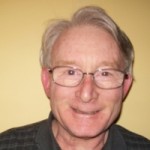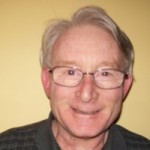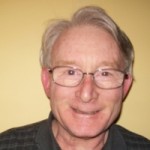When you spend years acquiring compensation data on corporate tax executives you learn a lot! TaxConnections conducts a compensation study every two years given the enormity of the project. This requires an extraordinary amount of effort to compile information, match up technical responsibilities for specialized tax roles, organize the information by geographical regions, and make sense of a wide range of equity programs. We conduct compensation studies in order to help corporate management teams attract the tax talent they need. These studies are not money-makers given the great deal of time it takes to prepare them. It is difficult to obtain salary information as people must trust you in order to get the real story! We must also organize it in a fashion that makes sense when you step out of the realm of base plus bonus and into the realm of equity and perks which are as vast as the sea. What you need to know is the real story behind corporate tax compensation if you want to successfully retain and keep the very best tax talent on the market..
Archive for Tax Management

Tax graduates work very hard to obtain a great education; they are then booted from the education nest only to struggle in finding a tax job. I was determined to find a solution to this problem and knew the only way to solve it was build it for tax graduates. What I learned consulting to multinational tax clients for thirty years was the challenge they faced finding and connecting with a fresh group of new tax graduates each year. Hundreds of times, tax executives of major corporations would ask me “Where are the tax graduates? Read More

Years ago, I was invited to Thomas Jefferson School of Law by Professor and Assistant Dean William H. Byrnes to speak to his students in the Tax Program in San Diego, CA. Professor Brynes has since moved on to Texas A&M as the Executive Professor of Law and Associate Dean for Special Projects. What you will learn is that Professor Byrnes was the first person I ever observed start long distance learning programs for Read More

The announcement of a merger or an acquisition of a company can affect everyone from Wall Street to the person walking home on the street that day. It sends waves of excitement, thoughts of one’s career security and confusion all at the same time. Every time a call arrives from a tax professional working in a corporate tax organization that is being acquired, fortunately my years of experience with these situations enables me to help them knowing what to expect. Read More

Regardless of how your tax team is organized, managing a tax organization across multiple locations is always a challenge. Even the most savvy management executives seek to find innovative ways to make people feel more connected. Whether you have a corporate tax team of 200 spread across 50 countries, or a corporate tax team of 10 spread across 3 countries; you must always strive to be creative to be effective. Years ago, everyone in the tax department was expected to be working in the same location; and now things have progressed to managing geographically dispersed teams. Read More

The focus of my career has been guiding tax professionals and tax organizations in their growth and success. In this post, I will share the roadblocks most tax leaders face in finding the highly technical tax expertise they need for their organizations. There is a connectivity challenge tax leaders face today and one that I spent more than three decades identifying, researching and ultimately solving. Read More

An organized approach to interviewing will greatly enhance the accuracy of the selection process. It will also create a more favorable impression on the candidate being interviewed. With an organized interview you are more likely to obtain the information necessary to make an informed decision. The primary purpose of an interview is to determine the candidate’s suitability of the role.
Proper questioning will provide pertinent information in evaluating the candidate. The interview questions we provide are designed to avoid some of the common errors in interviewing while encouraging the candidate to express their thoughts, ideas and feelings in a candid an honest manner. You must always pay close attention to what is said during an interview and make notes of responses. Approaching an interview in this manner leads to insightful information and more successful hires. There are often two candidates present in an interview, the “real candidate” and the “candidate on display”. All candidates interviewed wish to present themselves in a favorable light and impress the interviewer. Whether the candidate is really the person projected during the interview is the interviewer’s responsibility to decide. Read More

(Some information was reported by The Kiplinger Tax Letter (December 2015)
Timing of year-end contributions: Contributions made by check are deductible in 2015 if the check is mailed by year-end. If payment is made by bank credit card, it is deductible in 2015 if the charge is made by year-end. It doesn’t matter hen the credit card payment is made. If the donation is made with a retail store credit card, the deduction cannot be taken until the card is paid, even though it was charged in
Donations of securities and other property:
This is an excellent way to make a contribution without paying cash. Taxpayers can deduct the fair value of the securities on the date of the gift. Donating appreciated securities Read More

1. Earned income (EITC).
Taxpayers with no children it is $503, with one child $3,359, two qualifying children $5,548, three qualifying children $6,342 but are subject to AGI phaseouts. The recent tax law makes permanent the increase of $5,000 in the phaseout amount for joint filers scheduled to expire after 2017. The law also makes permanent the increased 45% credit percentage for taxpayers with three or more qualifying children. Under prior law, both increases had been available only through 2017. It also makes permanent the reduced earned income threshold of $3,000. The law makes the following provisions permanent:
(a) Taxpayer Identification Number (TIN) Required. The EITC is denied with respect to any taxable year for which the taxpayer has a TIN that has been issued after the due date for filing the return, including extensions. Read More

DEFERRED RETIREMENT PLANS LIMITATION
1. 401(K). The maximum contribution is $18,000 but increases to $24,000 if age 50 and older (up to $6,000 in catch-up contributions).
2. Defined Benefit Plans. The maximum benefit amount is $210,000.
3. Defined contribution plan [e.g 401(k), 403(b)) and 457]. The maximum contribution is the lesser of $53,000 or 100% of compensation.
4. Regular and Roth IRA. The maximum contribution is $5,500 plus a $1,000 catch up contribution if age 50 and older. Taxpayer must have earned income. Read More

TaxConnections is a tax media site promoting the authority and expertise of tax professionals worldwide. We are here to drive new business opportunities to our members and help them gain more visibility in the market. Due to demand, we now have an Executive Search Services division where our readers can go to view high-level tax jobs on https://www.taxconnections.com/current_searches our retained search division handles.
We also just released a new feature to post lower level tax jobs and we link leads right over to your own site: https://www.taxconnections.com/featured_tax_jobs Read More

Recently, I read a quote that caught my attention and it was “The two things in life you are in control of is your attitude and your effort”. January is the perfect time for refreshing the minds of your tax organization that each of us is in control of our attitude and effort. This is the opportune time to help your team get on track with their goals for the year. The best strategy to employ for getting your team on track is to identify what will motivate every unique person in your tax organization.
People are extremely motivated to achieve if this means they can get what they want and need! After asking thousands of tax professionals what motivated them to stay and succeed with a tax organization or conversely leave a tax organization, I identified triggers for motivation. The most important thing to remember is people in your organization have different needs. In 1943, American psychologist Abraham Maslow was best known for creating a theory of psychological health predicated on fulfilling innate human needs: self-actualization needs; self-esteem needs; belonging needs; security needs; and physiological needs. I am going to break down the 5 needs people in a tax organization display according to Maslow’s theory and my experience. When you identify the individual needs of your tax team and work with them fulfilling their desires, the result is increased motivation and productivity in your tax organization.


















Recent Comments